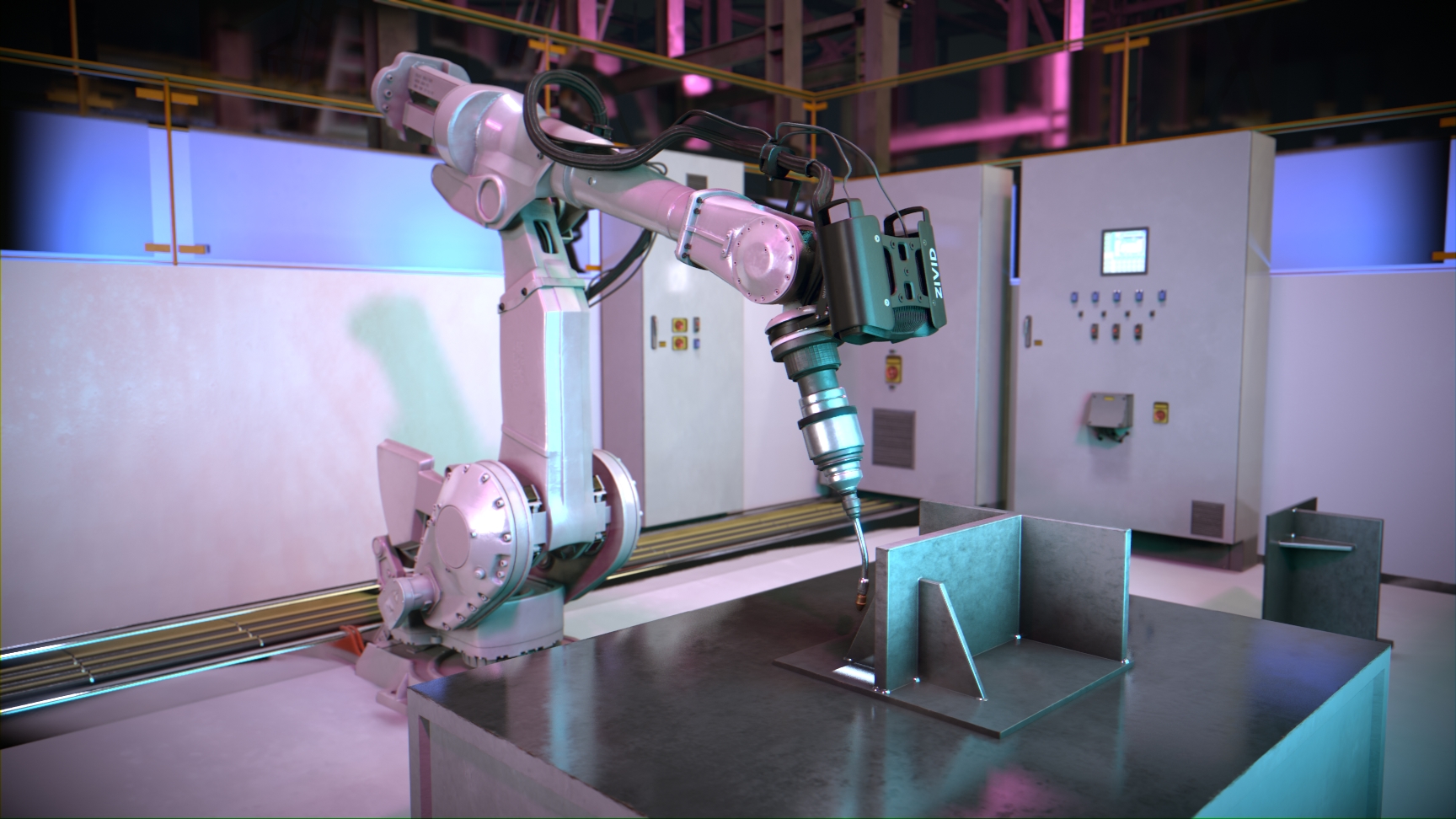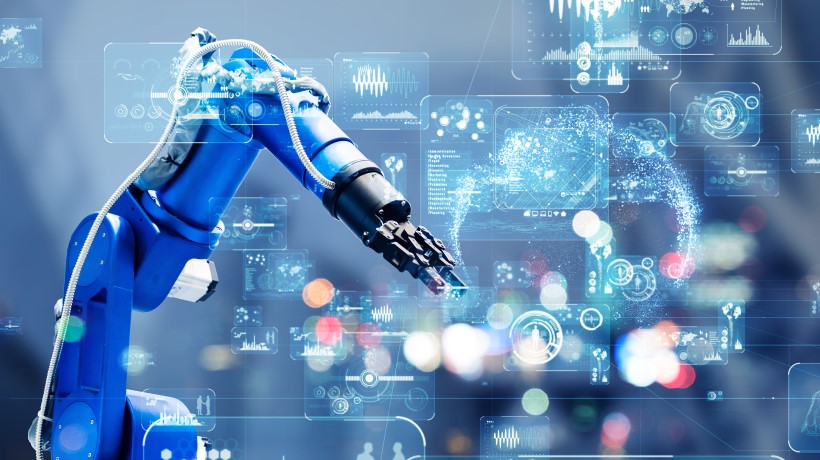Frequently asked questions about optical fibre diameter analyser — answered
Why Robotic Vision Is Crucial for Advancing Accuracy in Production Industries
Robotic vision has arised as an important component in contemporary production. It encourages devices to examine aesthetic information with exceptional precision. This capacity improves quality assurance and decreases the probability of flaws. As markets undertaking for better performance, recognizing the complexities of robotic vision comes to be essential. The interplay in between innovation and operational procedures increases important questions concerning future improvements and their effects. What exists ahead for precision in production?
Recognizing Robotic Vision Modern Technology

Enhancing Quality Control With Robotic Vision

Enhancing Operational Efficiency Through Automation

Automating production procedures with robotic vision greatly improves production speed, permitting quicker turn-around times. This innovation additionally reduces error prices, making certain greater accuracy in operations. In addition, structured source management is achieved, bring about more efficient usage of products and labor.
Enhanced Production Speed
While the integration of robotic vision in production has actually changed functional processes, its most considerable advantage exists in enhanced production speed. By employing advanced picture handling and real-time information evaluation, robotic vision systems can promptly identify and respond to manufacturing demands. This accelerated responsiveness gets rid of hold-ups typically associated with manual examination and decision-making procedures. In addition, these systems can operate continuously without fatigue, ensuring that manufacturing lines keep high throughput. The ability to discover and attend to concerns immediately even more simplifies operations, permitting producers to enhance output levels (optical fibre diameter analyser). Business benefit from reduced cycle times and raised efficiency, placing them competitively in the market. Boosted production rate, driven by robotic vision innovation, eventually results in boosted functional performance across the production landscape
Lowered Mistake Rates
As manufacturing speed boosts, preserving precision comes to be critical in making processes. Robotic vision systems significantly contribute to minimized error rates by supplying precise measurements and real-time evaluations. These innovative systems use high-resolution electronic cameras and advanced algorithms to discover defects, imbalances, or disparities in items throughout setting up. By automating quality assurance, makers can quickly recognize and correct concerns that human inspectors could forget. This not only lessens waste but additionally boosts general product high quality. Furthermore, the integration of robotic vision reduces variability in production, guaranteeing that each item fulfills rigorous specs. Manufacturers experience less pricey recalls and enhanced customer contentment, inevitably leading to a much more reliable and lucrative functional version.
Streamlined Source Management
Efficient resource management is crucial for making best use of functional efficiency in manufacturing, especially when integrated with robotic vision systems. These systems enhance the ability to keep an eye on and allot sources accurately, making sure that materials and labor are made use of effectively. By using advanced aesthetic technologies, manufacturers can recognize inefficiencies in real time, minimizing waste and improving production timelines. Furthermore, robotic vision allows exact supply monitoring, lessening the threat of overstocking or stockouts. Automation of these processes not only enhances operations but likewise permits human workers to concentrate on higher-value tasks, fostering development and productivity. Because of this, business can achieve considerable price savings while preserving high-grade standards, inevitably positioning themselves much more competitively in the industry.

Reducing Human Error in Manufacturing Processes
Human mistake remains a considerable obstacle in producing procedures, frequently causing pricey blunders and inadequacies. In atmospheres where precision is extremely important, also minor gaps in judgment can lead to malfunctioning items or hold-ups in manufacturing schedules. Robotic vision systems can minimize these threats by offering exact and consistent tracking of making procedures. By automating tasks such as quality control and assembly line inspections, these systems decrease the reliance on human oversight, consequently lessening the potential for errors.Moreover, robotic vision innovation enhances data precision, permitting real-time adjustments based on visual feedback. This ability guarantees that any discrepancies from established standards are quickly determined and corrected, additionally reducing the likelihood of mistakes. As manufacturers progressively adopt robotic vision, they can expect not only to enhance precision and performance however likewise to cultivate a much safer working atmosphere by reducing the pressure on human operators.
The Duty of Artificial Knowledge in Robotic Vision
Man-made intelligence noticeably enhances robotic vision by employing artificial intelligence algorithms and advanced image processing methods. These modern technologies allow robotics to interpret aesthetic information with greater precision, boosting both performance and accuracy in producing settings. Therefore, the assimilation of AI into read this robotic vision systems represents a crucial development in automation.
Device Knowing Algorithms
Maker understanding algorithms are revolutionizing robotic vision in manufacturing by allowing makers to analyze and assess visual information with impressive precision. These formulas allow robots to pick up from large datasets, adapting to brand-new scenarios and enhancing their performance with time. By leveraging techniques such as monitored and not being watched discovering, robotic systems can recognize patterns and anomalies in real-time, which enhances top quality Going Here control and decreases waste. In addition, artificial intelligence promotes far better decision-making procedures, allowing robotics to maximize their actions based on found out experiences. As these formulas advance, they equip robotic vision systems to do increasingly complicated tasks, ultimately driving effectiveness and accuracy in producing procedures. The assimilation of maker learning as a result plays an essential role in the advancement of robotic vision modern technology.
Image Handling Strategies
Enhancing the capabilities of robotic vision, image handling techniques play a vital function in allowing systems to interpret aesthetic information effectively. These strategies include algorithms that boost photo quality, essence appropriate features, and recognize patterns within visual data. By making use of methods such as side detection, segmentation, and item acknowledgment, robotic systems can identify and identify elements with impressive precision. The assimilation of expert system even more enhances these techniques, enabling adaptive learning and improved decision-making in dynamic environments. Because of this, robotic vision systems can not only spot flaws but likewise optimize processes, bring about raised efficiency and precision in production. Consequently, the constant innovation of image handling methods remains crucial to the evolution of robotic vision in industrial applications.
Future Fads in Robotic Vision for Production Industries
As markets significantly focus on performance and accuracy, the evolution of robotic vision innovation is established to transform making procedures substantially. Future patterns show substantial improvements in expert system and equipment understanding assimilation within robotic vision systems. These improvements will boost real-time decision-making abilities, permitting robots to adapt to differing conditions autonomously. Furthermore, the fostering of 3D vision systems is anticipated to raise, supplying more precise spatial awareness and things acknowledgment. Cooperations between robotics and human workers might additionally progress, with advanced vision systems facilitating much safer and more effective communications. In addition, the usage of side computer will likely enable faster information handling, minimizing latency and improving functional responsiveness. As these fads unfold, the production industry stands to take advantage of enhanced quality assurance, minimized waste, and streamlined workflows, inevitably bring about boosted competition in a swiftly transforming market.
Frequently Asked Inquiries
Exactly How Does Robotic Vision Differ From Standard Equipment Vision Equipments?
Robotic vision incorporates innovative formulas and real-time handling, enabling dynamic analysis and communication with environments. In comparison, conventional device vision primarily concentrates on static image capture and analysis, limiting adaptability and responsiveness click site in complex manufacturing situations.
What Industries Advantage Many From Robotic Vision Modern Technology?
Numerous sectors profit significantly from robotic vision innovation, consisting of vehicle, electronic devices, and food processing. These industries leverage enhanced accuracy, performance, and adaptability, eventually boosting manufacturing high quality and decreasing operational prices via innovative automation services.
Can Robotic Vision Systems Be Integrated With Existing Manufacturing Equipment?
Robotic vision systems can without a doubt be incorporated with existing manufacturing devices. This integration boosts functional efficiency, permitting smooth collaboration in between conventional equipment and advanced aesthetic modern technology, inevitably improving total manufacturing processes and results.
What Are the Prices Linked With Applying Robotic Vision Solutions?
The expenses connected with carrying out robotic vision services differ substantially, influenced by variables such as system complexity, called for software application, hardware components, integration with existing equipment, and recurring upkeep costs, inevitably impacting general roi.
Just how Do Upkeep and Assistance for Robotic Vision Equipments Work?
Upkeep and support for robotic vision systems entail regular software updates, hardware examinations, and troubleshooting. robotic vision. Suppliers normally offer service contracts, ensuring timely aid and lessening downtime to keep peak performance and integrity in industrial applications